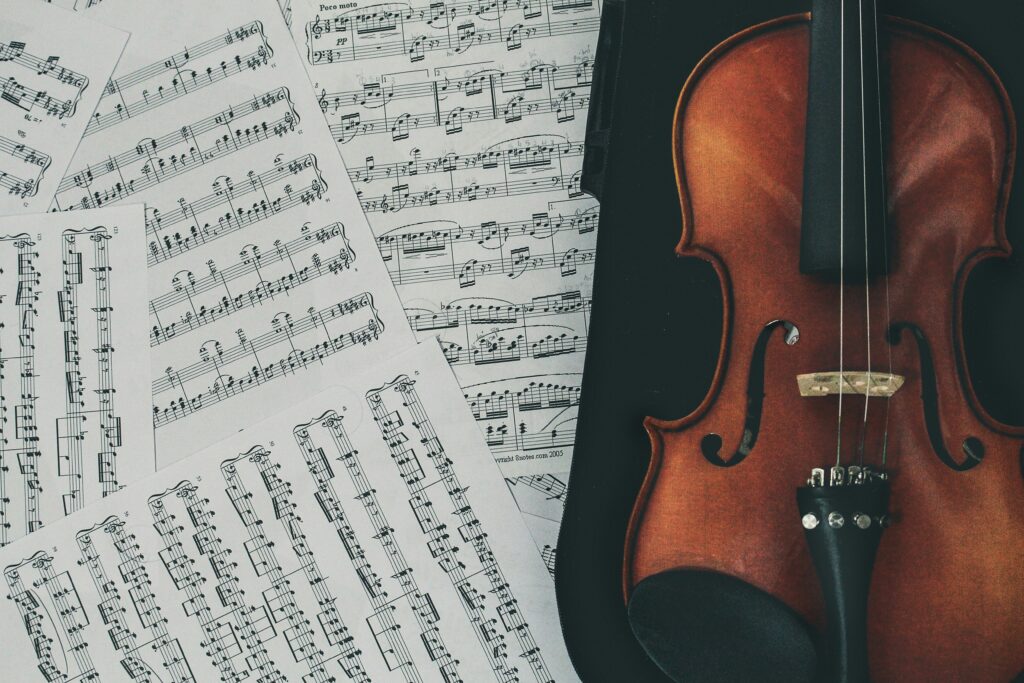I was wondering why I never considered the intersection of music and law as a career. It should have been an obvious choice since I love music. When I’m sad or feeling down, singing and playing the ukulele is my escape. Playing the guzheng is a soothing way to unwind after using my brain all day. Drums are my best friend when I need to release stress. Yet, somehow, I never thought about combining music and law before. Looking back, I realise it’s because I didn’t know this field even existed, no matter how niche it is.
When I had just graduated from law school, I read a career guidance book for law students. After finishing it, I felt both motivated and confused, so I emailed the author to ask if he had any advice for fresh graduates. He was so kind and replied, “find a practice area you love, dig into it, and become an expert.”
After that, I explored areas like corporate law and capital markets, which I really enjoy. But recently, I discovered a new passion — music law. A friend mentioned taking a music law course at her U.S. law school, and it hit me that music can be its own legal field! I could be a lawyer helping musicians. How fascinating is that!
As an amateur musician myself, I have friends who play in bands outside their day jobs. Music is like magic – it brings back memories and changes emotions. Sometimes, you just feel grateful that we still have music, especially when life feels out of control or when we’re going through tough times.
The music industry has been around for centuries, but its commercial evolution spans just over 100 years. Despite challenges, it has always found ways to adapt and thrive. Every time new technology emerges, people worry it will destroy the industry. Yet, time and again, music industry evolves and grows stronger.
A Brief History of the Music Industry
1900 – 1950: The Birth of the Modern Music Industry
In the 1890s, live performances dominated entertainment, from traveling shows (like circuses, vaudeville acts, and burlesque shows) to minstrel performances (performed by white people in blackface makeup, mainly to reinforce stereotypes, as well as by Black performers singing songs). The sheet music business was also booming, with companies like Shapiro, Bernstein & Co and Mills Music—both of which still exist today.
A major innovation of the time was the piano roll, the first mechanical reproduction of a song. These perforated paper rolls move over a reading system in player pianos. (Fun fact: The Musical Museum in London, near Kew Gardens, has one of the world’s largest collections of piano rolls—over 20,000!)
Despite initial concerns, piano rolls didn’t kill the sheet music business. Congress amended the Copyright Act to ensure publishers received mechanical royalties for each piano roll sold, setting an early precedent for music copyright law.
The 1920s saw the rise of recorded music. Harry Pace, a partner of blues pioneer W.C. Handy, founded Black Swan Records, the first Black-owned record label. Around the same time, Mamie Smith became the first African American artist to record vocal blues, and Ethel Waters rose to fame through record sales.
The Great Depression of the 1930s raised fears that music sales would collapse. However, radio stations – previously used mainly for news – began broadcasting live music performances. During this time, William Samuel Paley acquired the Columbia Phonographic Broadcasting System and rebranded it as Columbia Broadcasting System(CBS), a media giant still influential today.
In the 1940s, World War II halted record production, yet the music industry found a new avenue: the Armed Forces Radio Network. This innovation not only kept music alive in the U.S. but spread American music culture worldwide.
After the war, returning soldiers who had listened to music on the Armed Forces Radio Network fuelled a surge in musical instrument sales. At that time, music education was limited to classical training in conservatories. To address this gap, Lawrence Berk founded Berklee College of Music, now one of the world’s top music schools.
1950 – 2000: The Rise of Recorded Music and New Technologies
The 1950s saw a wave of innovation in the record industry. Ahmet Ertegun co-founded Atlantic Records, helping shape R&B. Art Rupe’s Specialty Records recorded ground-breaking blues and R&B artists from New Orleans, the birthplace of popular music.
Television emerged and took over radio’s role in drama and storytelling, leading radio stations to focus more on playing records. The jukebox, a coin-operated music player, became widely popular, further boosting record sales. This period also saw the birth of rock and roll, blending blues, gospel, pop, and R&B.
African American entrepreneurs played a significant role in shaping the industry. Sam Cooke started SAR Records, while Ray Charles transitioned from Atlantic Records to ABC Records for greater creative freedom. Berry Gordy founded Motown, which became the highest-earning Black-owned business for decades.
The 45 RPM records (playing at a speed of 45 revolutions per minute) became a staple in the 1950s and 1960s. Albums gained popularity alongside the growth of rock and R&B. The cassette tape, introduced in the 1960s, revolutionised how people consumed music.
The 1970s saw disco music thrive. Entrepreneurs launched independent production companies and sold 12 inch singles – a vinyl format favoured in clubs.
In the 1980s, Sony’s Walkman made music portable, and MTV launched, making music videos an essential part of the industry. Michael Jackson’s Thriller album dominated the charts. CDs were introduced, setting the stage for digital music.
By the 1990s, CD sales skyrocketed as people replaced their vinyl and cassette collections. However, record companies, driven by greed, stopped selling singles and forced consumers to buy full albums for just one song.
The Digital Age and Streaming Revolution
Record sales peaked at $14 billion in 1999, compared to $604 million in 1958. However, the music industry faced a new challenge: Napster. This peer-to-peer file-sharing platform made MP3s widely available, leading to widespread piracy. Lawyers in the industry found navigating these challenges to be increasingly difficult, as piracy and copyright issues intensified. After multiple copyright infringement lawsuits, Napster shut down in 2001.
In 2003, Steve Jobs introduced iTunes, offering a legal way to purchase music online. iTunes became a game-changer, allowing people to buy individual songs instead of entire albums. (I still have my old iPod Shuffle tucked away in a drawer—a grey one!)
Legendary musician David Bowie predicted that “music itself is going to become like running water or electricity,” referring to the future of subscription-based access.
This vision became reality with satellite radio (e.g., Sirius XM Radio), which offered music through paid subscriptions. Meanwhile, internet radio platforms like Pandora introduced ad-supported and premium tiers, paving the way for modern streaming services.
Today, platforms like Spotify and Rhapsody create a market of tremendous growth, offering free and premium plans. While some question how artists make money in the streaming era, new revenue streams have emerged. Music festivals have surged in popularity, providing major income opportunities for performing artists.
Conclusion
Music has always adapted to technological change, from sheet music to streaming services. The industry evolves, but its essence remains the same: music connects people, evokes emotions, and enriches lives.
For me, realising that I can combine law and music is an exciting new chapter. As the industry transforms, so do the opportunities for musicians and the professionals who support them. And I can’t wait to be a part of it.
(The part on history of music industry is mainly from my study notes of Music Business Foundations on Cousera, delivered by John P. Kellogg)


